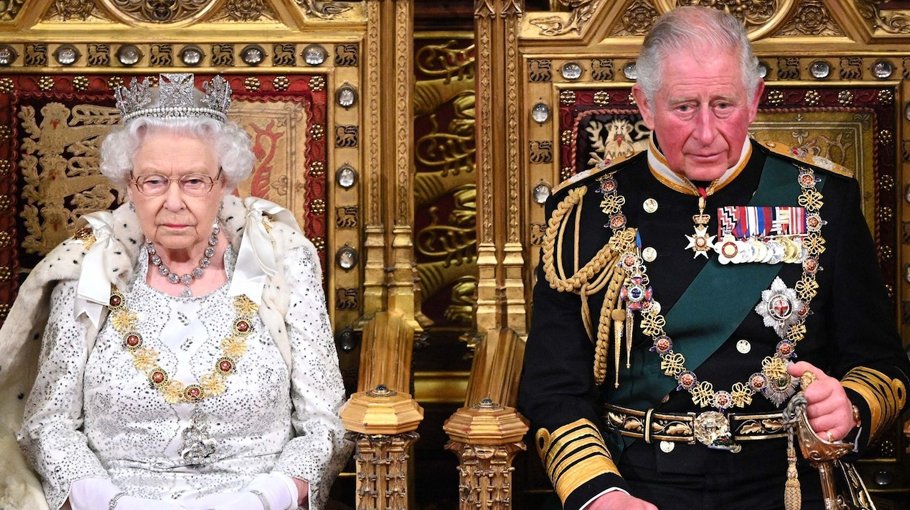The revolutionary monarchy of Elizabeth II

Britain’s longest-serving monarch has died. It feels like a death in the family. Born in 1926, the year that John Logie Baird gave the first public demonstration of television, and crowned in 1953, the year of Joseph Stalin’s death, the Queen has been with us for so long that only a sliver of the population can remember life without her. She has reigned for longer than any other British monarch, easily outstripping her great-great grandmother, Queen Victoria. Acting on the principle that “I have to be seen to be believed,” she has personally met innumerable people, and touched the lives of billions by radio and television. Who does not remember her Christmas broadcasts? Or the solace she provided during the Covid pandemic when she quoted Vera Lynn’s promise that “we’ll meet again.”
Now she is gone. The miracle of the monarchy is how it has survived in a democratic and egalitarian age. Everything it stands for — inheritance rather than merit and ascription rather than election — is the antithesis of everything we hold dear as a civilization. Yet the British monarchy has not only survived, it has thrived. It’s made none of the compromises of the bicycling monarchies of the Scandinavian world. Indeed, it has almost relished defying compromise.
How has this come about? In preparation for her job, the Queen was provided with a handbook on how to survive the acid of modernity. This was Walter Bagehot’s great book The English Constitution, published in 1867 at the height of Victorian brio. When she was a child, the vice-provost of Eton College, Henry Marten, visited Windsor Castle regularly to teach her about her constitutional duties, laying particular emphasis on Bagehot’s wisdom.
Nothing about the experience was normal. Marten addressed the solitary princess as “gentlemen,” lecturing her as if she was a class of Etonians. Even more surreal was what, channeling Bagehot, he taught her: that Britain is a “disguised republic,” that the best qualification for a monarch is stupidity, and that the job is to spend life as a frivolous distraction from the real business of government.
Bagehot thought that statecraft was far too serious to be left to the masses. Rather, government needed to be left to a tiny elite of serious-minded men who understood the world. But how could you get the people to accept such a situation in a democratizing age? The answer lay in distraction by means of monarchy. Bagehot hoped that the people would focus on the splendid royals in their gilded carriages, leading the great parade, while “the real rulers are secreted in second-rate carriages.” “No one cares for them or asks about them, but they are obeyed implicitly and unconsciously by reason of the splendor of those who eclipsed and preceded them.”
Bagehot also replaced the individual with the family at the heart of his drama. This was part of his distraction strategy. As he saw it, regular people — particularly women — cared 50 times more for a marriage than a ministry. Distraction also doubled as legitimacy: People were far more likely to obey a state with a human face than one that was a mere abstraction. By providing ordinary people with brilliant editions of universal facts — such as birth, marriage and death — the Royal Family also anchored the business of government in regular human affairs. It was part of an embourgeoisement strategy.
In Bagehot’s schema the royal family was to be transformed from a relic of aristocratic society into an embodiment of bourgeois virtues. Victoria’s job was to be both Empress of India and the acme of companionable marriage. The monarchy remains physically Victorian.
The palaces and their decorations reflect the tastes of the queen-empress. The great events continue in their Victorian incarnations. The ceremonial uniforms of the guards are as Victorian as Gilbert and Sullivan operettas. But Elizabeth II had to abandon Bagehot’s handbook and invent a new one all of her own. Nobody today believes that the Queen ruled as well as reigned — and if they did they would have rightly demanded change. The idea that monarchy is essentially a show is taken for granted. It is a distraction in the sense of a diversion rather than a disguise.
The family dimension to this show is widely celebrated. The monarchy is never more popular than when it is providing us with brilliant editions of life-cycle events such as births, marriages and deaths. Still, today’s monarchy has singularly failed in its attempt to project itself as a perfect middle-class family sitting at the apex of British society.
Far from being role models, the Windsors are haunted by extreme versions of common family maladies — divorce, adultery, betrayal, hypocrisy. If we have celebrated fairy tale marriages, we have also watched in horror as they have descended into hellish acrimony.
The Queen’s genius was to understand that monarchy provides not distraction but a counterbalance to the imperatives of modern life. Clever courtiers like to emphasize the way she moved with the times and modernized the Firm, as she liked to call it.
“Everything’s changed except the headscarf,” says one, leaving aside such little things as Windsor Castle and Balmoral. The Queen grasped Edmund Burke’s great dictum that, for a true conservative, the point of change is to stay the same, at least in the things that really matter. Monarchy is a restraint on modernity or it is nothing.
The Queen’s most obvious achievement was to provide an element of continuity in a world that is in a fever of change. Liberal capitalism has taken the principle of creative destruction to the Nth degree — not only through the creation and destruction of companies but also through the constant reordering of daily life (whenever you think that you have learned how to use electronic banking, the rules change and you have to master a new system). Yet the populist alternatives to liberal capitalism are all exceedingly ugly, from the jingoism of the far right to the criminal kleptocracy of Vladimir Putin.
The Queen embodied the civilizing power of tradition, which counterbalances change without resorting to the bloviation of outright reaction. Robert Hardman, perhaps the most perceptive of Britain’s strange tribe of royal watchers, puts it well: “She is the living incarnation of a set of values and a period of history. In Britain, she is Tower Bridge and a red double-decker bus on two legs, not to mention Big Ben, afternoon tea, village fetes and sheep-flecked hills in the pouring rain. In the wider world, she is the newsreel figure who just has carried on going into digital high definition.”
The Queen lived a life of duty in an age when duty is going out of fashion. The meritocratic elite that has come to dominate the world since Elizabeth came to the throne is estranged from the world of duty and service.
Believing that they owe their position to merit rather than luck, they think in terms of what the world owes them rather than what they owe the world. And living in the global economy, they don’t have any time for local ties and obligations.
Some of her endless round of duties may have been fascinating. She met more world leaders than anybody else alive, including not only 13 American presidents but also such near mythical figures as Winston Churchill (who intimidated her when she first came to the throne), Charles de Gaulle and Nelson Mandela.
Even when she met fascinating people, she was constrained by royal protocol: The bulk of what she did must surely have been tedious. Can anybody really enjoy cutting ribbons or watching folk dancing or conferring knighthoods on disc jockeys? Prince Philip once observed that this was a life that nobody would choose or volunteer for (particularly, it might be added, if you inherited enough money to live a life of irresponsible self-indulgence).
But the Queen never failed to understand that what might seem like a regular meeting to her is the only time that a nurse or carer might meet the monarch.
We have been hard on Bagehot and his notion of the monarch as a distraction. But just as central to his argument is the idea that the British constitution is based on a distinction between the dignified branch of government and the efficient branch. The dignified constitution refers to permanent institutions that exist in a sort of Platonic ideal world. The efficient part belongs to the impermanent world of politicians and their struggles for power. The Queen’s job was to embody the first while ultimately bowing to the second. She had to read out the agenda of the government of the day and, at the same time, embody the dignity of the state.
Queen Elizabeth did both jobs superbly. She went along with changes that were profoundly alien to her class — the bourgeois triumphalism of Margaret Thatcher, at one extreme, or the abolition of the hereditary principle in the House of Lords, at the other. She even deferred to Tony Blair when she mishandled the royal response to the death of Diana, “the people’s princess.” She played a leading role in the transformation of the British Empire into a commonwealth of self-governing nations. At the same time, she embodied the grandeur of the state.
There will be much talk of the future of the monarchy in coming months as the first shock of the Queen’s death fades. This division of powers has surely become more, rather than less, important in recent years as the culture wars have raged and tempers have flared. America’s belief that the president is both a political actor and the head of state was profoundly tested by the Trump presidency. In Britain, it is possible to loathe Liz Truss or Keir Starmer but still happily participate in state functions. The Queen pulled off a remarkable trick in preserving a monarchy that was simultaneously majestic and apolitical. It is a measure of her achievement that the new monarch will be largely judged on his ability to pull off exactly the same trick.
The Queen is dead. Long live the King.
Adrian Wooldridge is a Bloomberg Opinion Columnist. Source: Bloomberg



